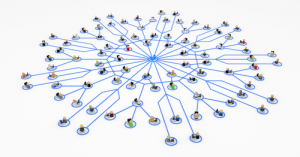[fusion_builder_container hundred_percent=”no” equal_height_columns=”no” menu_anchor=”” hide_on_mobile=”small-visibility,medium-visibility,large-visibility” class=”” id=”” background_color=”” background_image=”” background_position=”center center” background_repeat=”no-repeat” fade=”no” background_parallax=”none” parallax_speed=”0.3″ video_mp4=”” video_webm=”” video_ogv=”” video_url=”” video_aspect_ratio=”16:9″ video_loop=”yes” video_mute=”yes” overlay_color=”” video_preview_image=”” border_color=”” border_style=”solid” padding_top=”” padding_bottom=”” padding_left=”” padding_right=”” type=”legacy”][fusion_builder_row][fusion_builder_column type=”1_1″ layout=”1_1″ background_position=”left top” background_color=”” border_color=”” border_style=”solid” border_position=”all” spacing=”yes” background_image=”” background_repeat=”no-repeat” padding_top=”” padding_right=”” padding_bottom=”” padding_left=”” margin_top=”0px” margin_bottom=”0px” class=”” id=”” animation_type=”” animation_speed=”0.3″ animation_direction=”left” hide_on_mobile=”small-visibility,medium-visibility,large-visibility” center_content=”no” last=”true” min_height=”” hover_type=”none” link=”” border_sizes_top=”” border_sizes_bottom=”” border_sizes_left=”” border_sizes_right=”” first=”true”][fusion_text columns=”” column_min_width=”” column_spacing=”” rule_style=”” rule_size=”” rule_color=”” hue=”” saturation=”” lightness=”” alpha=”” user_select=”” content_alignment_medium=”” content_alignment_small=”” content_alignment=”” hide_on_mobile=”small-visibility,medium-visibility,large-visibility” sticky_display=”normal,sticky” class=”” id=”” margin_top=”” margin_right=”” margin_bottom=”” margin_left=”” fusion_font_family_text_font=”” fusion_font_variant_text_font=”” font_size=”” line_height=”” letter_spacing=”” text_transform=”” text_color=”” animation_type=”” animation_direction=”left” animation_color=”” animation_speed=”0.3″ animation_delay=”0″ animation_offset=”” logics=””]

The Evolution of Network Thinking at Plexus Institute
There was a time when discussions about networks centered on the foundational science and the work of key network scholars. At Plexus Institute, this emerging science was embraced as an opportunity to explore new thinking and applications. The focus was on how networks—and their underlying architecture, dynamics, operations, and structure—offer critical insights into various existing systems, including schools, insect colonies, the internet, and business organizations.
Over the years, thought leaders such as June Holley, Valdis Krebs, and Jack Ricchiuto incubated their ideas and research within the Plexus Network. Their individual and collaborative efforts have significantly contributed to the study of networks for more than 30 years. Their work has led to new ways of understanding how networks form, grow, and transform to create more resilient and effective systems.
June Holley’s insights into network weaving have been particularly influential. She describes the development of networks as a process that mirrors the phases of human development. Her model illustrates how networks evolve from dependence to independence and ultimately to collective collaboration. The process is not strictly linear—unlike human development, networks can accelerate progress through the stages with the help of network weavers.
“It’s interesting to see networks grow from weaker to stronger. They go through four stages in the process. Here is a model based on the phases of human development. When we bring people together in their networks, we see all four stages within various connections in the network. Best of all, unlike human development where phases cannot be skipped, effective network development can involve immediate acceleration to an emerging and scaling network of adult connections. Network weavers help people move into the adult phase more quickly and successfully, accelerating the possibilities of more strong networks.” —June Holley
[/fusion_text][fusion_text columns=”” column_min_width=”” column_spacing=”” rule_style=”default” rule_size=”” rule_color=”” hide_on_mobile=”small-visibility,medium-visibility,large-visibility” class=”” id=””]
“It’s interesting to see networks grow from weaker to stronger. They go through four stages in the process. Here is a model based on the phases of human development. When we bring people together in their networks, we see all four stages within various connections in the network. Best of all, unlike human development where phases cannot be skipped, effective network development can involve immediate acceleration to an emerging and scaling network of adult connections. Network weavers help people move into the adult phase more quickly and successfully, accelerating the possibilities of more strong networks.” June Holley
[/fusion_text][/fusion_builder_column][fusion_builder_column type=”1_2″ layout=”1_2″ spacing=”” center_content=”no” link=”” target=”_self” min_height=”” hide_on_mobile=”small-visibility,medium-visibility,large-visibility” class=”” id=”” background_color=”” background_image=”” background_image_id=”” background_position=”left top” background_repeat=”no-repeat” hover_type=”none” border_color=”” border_style=”solid” border_position=”all” border_radius=”” box_shadow=”no” dimension_box_shadow=”” box_shadow_blur=”0″ box_shadow_spread=”0″ box_shadow_color=”” box_shadow_style=”” padding_top=”” padding_right=”” padding_bottom=”” padding_left=”” margin_top=”” margin_bottom=”” animation_type=”” animation_direction=”left” animation_speed=”0.3″ animation_offset=”” last=”false” border_sizes_top=”0″ border_sizes_bottom=”0″ border_sizes_left=”0″ border_sizes_right=”0″ first=”true” spacing_right=””][fusion_title hide_on_mobile=”small-visibility,medium-visibility,large-visibility” class=”” id=”” content_align=”center” size=”2″ font_size=”” line_height=”” letter_spacing=”” margin_top=”” margin_bottom=”” margin_top_mobile=”” margin_bottom_mobile=”” text_color=”#8bc34a” style_type=”none” sep_color=”” margin_top_small=”” margin_bottom_small=””]
4 Stages of Network Development
[/fusion_title][fusion_text columns=”” column_min_width=”” column_spacing=”” rule_style=”” rule_size=”” rule_color=”” hue=”” saturation=”” lightness=”” alpha=”” user_select=”” awb-switch-editor-focus=”” content_alignment_medium=”” content_alignment_small=”” content_alignment=”” hide_on_mobile=”small-visibility,medium-visibility,large-visibility” sticky_display=”normal,sticky” class=”” id=”” margin_top=”” margin_right=”” margin_bottom=”” margin_left=”” fusion_font_family_text_font=”” fusion_font_variant_text_font=”” font_size=”” line_height=”” letter_spacing=”” text_transform=”” text_color=”” animation_type=”” animation_direction=”left” animation_color=”” animation_speed=”0.3″ animation_delay=”0″ animation_offset=”” logics=””]
1. Infancy
At this stage, people in the network feel dependent on formal leaders to make things happen. Their actions are structured around the assumption that parental leaders will provide for their needs. Success is framed as a trade-off between compliance and protection, with network members relying heavily on the guidance and authority of formal leadership.
2. Childhood
As networks enter childhood, people begin to demonstrate interest in making things happen. However, they still seek permission and support from formal leaders. Their focus shifts toward gaining more resources, approvals, and funding from the “parent” figures. This stage is marked by a sense of entitlement and an ongoing demand for support from those in leadership roles.
3. Adolescence
The adolescence stage is marked by a shift from dependency on leaders to competition with peers. People in the network begin to act independently but maintain a belief that resources are finite. As a result, they see others as rivals, assuming that someone’s gain must come at another’s expense. This scarcity mindset often leads to competitive behaviors within the network.
4. Adulthood
In the adulthood stage, people in the network take full responsibility for their roles and contributions. They understand that working together can expand the “pie of resources” so that everyone benefits. Members recognize that they can achieve more together than they ever could alone or in competition. This phase is characterized by collaboration, co-creation, and shared purpose. Network weavers play a critical role in accelerating the transition to adulthood, helping people realize the potential of collective impact and self-directed action.
[/fusion_text][/fusion_builder_column][fusion_builder_column type=”1_2″ layout=”1_2″ spacing=”” center_content=”no” link=”” target=”_self” min_height=”” hide_on_mobile=”small-visibility,medium-visibility,large-visibility” class=”” id=”” background_image_id=”” background_color=”” background_image=”” background_position=”left top” background_repeat=”no-repeat” hover_type=”none” border_color=”rgba(0,0,0,0.04)” border_style=”solid” border_position=”all” border_radius_top_left=”” border_radius_top_right=”” border_radius_bottom_left=”” border_radius_bottom_right=”” box_shadow=”no” box_shadow_vertical=”” box_shadow_horizontal=”” box_shadow_blur=”0″ box_shadow_spread=”0″ box_shadow_color=”” box_shadow_style=”” padding_top=”” padding_right=”7″ padding_bottom=”” padding_left=”7″ margin_top=”” margin_bottom=”” animation_type=”” animation_direction=”left” animation_speed=”0.3″ animation_offset=”” last=”true” border_sizes_top=”5″ border_sizes_bottom=”5″ border_sizes_left=”5″ border_sizes_right=”5″ first=”false”][fusion_title hide_on_mobile=”small-visibility,medium-visibility,large-visibility” class=”” id=”” content_align=”center” size=”2″ font_size=”” line_height=”” letter_spacing=”” margin_top=”” margin_bottom=”” margin_top_mobile=”” margin_bottom_mobile=”” text_color=”#8bc34a” style_type=”none” sep_color=”” margin_top_small=”” margin_bottom_small=””]
Networks in Human Systems
[/fusion_title][fusion_text columns=”” column_min_width=”” column_spacing=”” rule_style=”” rule_size=”” rule_color=”” hue=”” saturation=”” lightness=”” alpha=”” user_select=”” content_alignment_medium=”” content_alignment_small=”” content_alignment=”” hide_on_mobile=”small-visibility,medium-visibility,large-visibility” sticky_display=”normal,sticky” class=”” id=”” margin_top=”” margin_right=”” margin_bottom=”” margin_left=”” fusion_font_family_text_font=”” fusion_font_variant_text_font=”” font_size=”” line_height=”” letter_spacing=”” text_transform=”” text_color=”” animation_type=”” animation_direction=”left” animation_color=”” animation_speed=”0.3″ animation_delay=”0″ animation_offset=”” logics=””]
Building Smart Communities Through Network Weaving (pdf) – Valdis Krebs and June Holley, 2006
Smart Networks Presentation (pdf) – June Holley, 2009
Network Weaver Checklist (pdf) – June Holley, 2008
Map Drawing Activity (Smart Network Weaving) (pdf) – June Holley
Ancient Practice of Chinese Social Networking (pdf) – Scott Hammond and Lowell Glenn, 2004
[/fusion_text][fusion_text columns=”” column_min_width=”” column_spacing=”” rule_style=”” rule_size=”” rule_color=”” hue=”” saturation=”” lightness=”” alpha=”” user_select=”” awb-switch-editor-focus=”” content_alignment_medium=”” content_alignment_small=”” content_alignment=”” hide_on_mobile=”small-visibility,medium-visibility,large-visibility” sticky_display=”normal,sticky” class=”” id=”” margin_top=”” margin_right=”” margin_bottom=”” margin_left=”” fusion_font_family_text_font=”” fusion_font_variant_text_font=”” font_size=”” line_height=”” letter_spacing=”” text_transform=”” text_color=”” animation_type=”” animation_direction=”left” animation_color=”” animation_speed=”0.3″ animation_delay=”0″ animation_offset=”” logics=””]
The Role of Network Weavers
Network weavers play an essential role in guiding people and organizations through the phases of network development. By fostering connections, building trust, and encouraging collaborative action, they help networks progress more quickly from infancy to adulthood. The role of the network weaver goes beyond facilitation—they act as catalysts, enabling self-organizing behaviors and expanding the possibilities for thriving, interconnected networks.
Plexus Institute’s ongoing exploration of network development offers valuable insights for anyone seeking to build stronger, more connected systems. The four stages of network development—infancy, childhood, adolescence, and adulthood—provide a useful framework for understanding how networks evolve and mature. By leveraging the guidance of network weavers, organizations and communities can accelerate their progress and realize the full potential of networked collaboration.
[/fusion_text][/fusion_builder_column][/fusion_builder_row][/fusion_builder_container]

Leave A Comment
You must be logged in to post a comment.